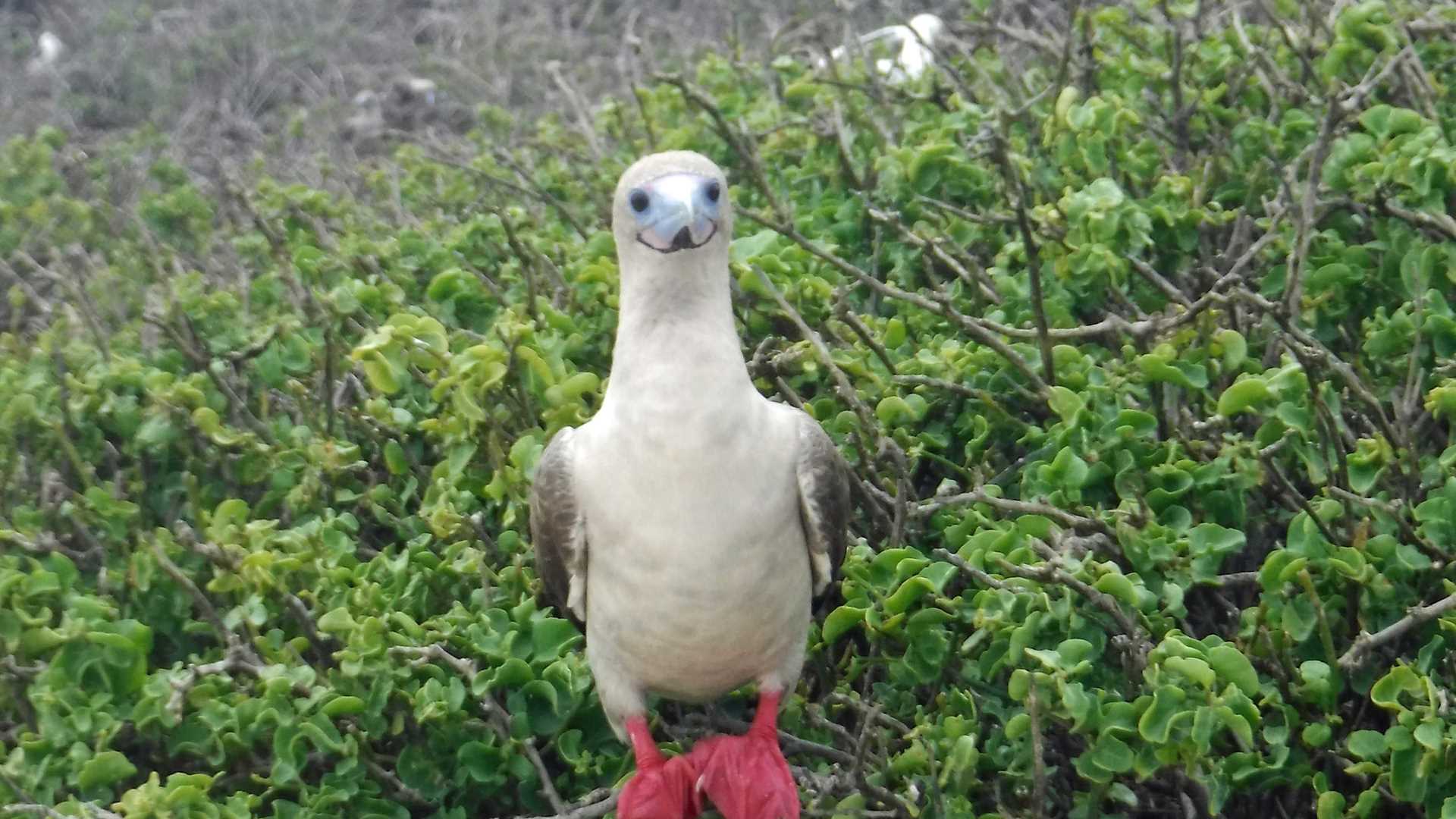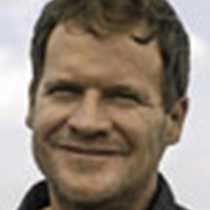Located in the northeast part of the Galapagos Islands, less than half of a degree north of the Equator, Genovesa Island is a paradise for many species of sea birds. The only species of reptile that exists on this island is the Genovesa marine iguana.
Early in the morning, we woke up in this eroded caldera full of bird action: red-footed boobies, Nazca boobies, frigate birds, red-billed tropicbirds, and storm petrels were flying around National Geographic Islander. Our first activity took us to Darwin’s Bay, where we walked on top of a young coral beach. Swallow-tailed gulls were the first birds nesting at the beach, and a large number of great frigate birds, Nazca boobies, and red-footed boobies were flying all around us, making the most wonderful symphony of birds calls that we could imagine.
The tide was coming up, and we had chance to walk around a tide pool where young Galapagos sea lions were playing together and nursing. We came back to the ship and part of the group went for deep water snorkelling in the eroded caldera. Some unique creatures live in this unique location, like the Moorish idol and the Galapagos fur seal (which is not a true seal, it is a sea lion).
After lunch, Kayakers and stand-up paddleboarders had a wonderful experience cruising around this caldera of birds. In the afternoon, we visited a location called Prince Philip’s Steps, which was named after England’s Prince Philip who visited in 1962 on board HMS Britannia.
After disembarking on this unique eroded cliff, we walked to the top of an eroded volcanic wall. Once again a large number of red-footed boobies, Nazca boobies, and great frigate birds were nesting in front of us in this semi-dormant forest of holy sticks (Palo Santo), muyuyos, and many other native plants.
Eventually the forest gave way to an open lava field near the western coast of this island. Storm petrels are usually observed here in large numbers—sometimes thousands at a time, which was the case today. In this destination a population of short-eared owls was ready to hunt the petrels, and this afternoon we observed nine short-eared owls doing exactly that. One of the owls jumped in the air and took a storm petrel right in front of us.
A visit to Genovesa Island is the perfect end to a wonderful week on board National Geographic Islander.







